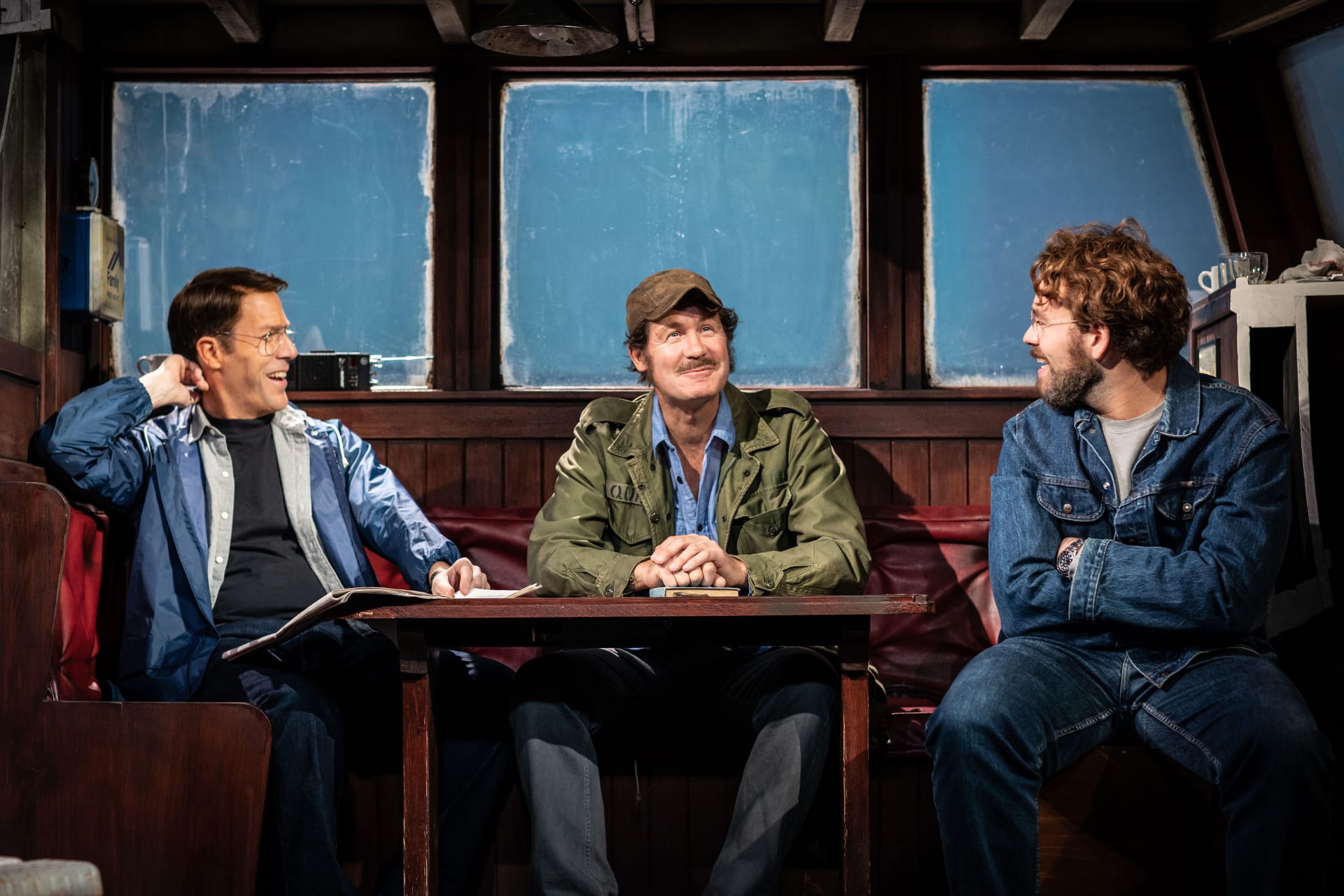The freezing wrath of tempestuous Greek gods wouldn’t have quenched its feel-good factor.
With woodchip underfoot, colourful carts and fairy-lights, we headed into a sixteenth century marketplace and then into a pop-up structure based on the polygonal theatres in which Shakespeare’s plays were first performed. There was a tangible bustle and atmosphere, and a bear towering tall as we headed inside to take our seats in the lowest of the three tiers. These are weatherproof: at our feet, those with the cheaper ‘groundling’ tickets stood, sat and reclined in the middle risking the rain in the space where the peasants would have enjoyed the show four hundred years ago.
The stage was of bare aged wood onto which the noble characters appeared in stylish attire and floaty white dresses befitting a story set in Athens. The three different groups within the story each had their own style and those next on stage, the joyful cast of the play-within-a-play, sported rural costumes in the everyday browns, reds, yellows and greens of the marketplace. This changed the atmosphere on stage in an instant, matching their light-hearted humour which was bright and engaging. Suzy Cooper in particular, playing Peter Quince, was relentlessly and enchantingly funny whilst Bottom, played by Paul Hawkyard, filled the stage with chuckle-inducing charisma.
Altering the mood again came the fairies, the most notably staged demographic in this production. They carried the narrative with unusual and inventive flair, dancing across the stage like shadowy silver moonlight on raggedy dark bark, a band of mischief-making forest sprites and wood nymphs who, in another literary era might have been mistaken for The Lost Boys. Of note, and in an unexpected twist that took me a moment to fathom, malevolent Oberon was powerfully played by a woman (Claire Cordier) and Tom Kanji was cast as a Titania, whose wealth of womanly wiles even included a touch of twerking. The fairies both individually and en masse had an incredible striking physicality which was teamed with singing, stamping, clever choreography and more surprises that I don’t wish to spoil: they had both my Teenage Companion and I transfixed from the first moments to the finale.
The four mortal lovers were all excellent and Francesca Zoutewelle was a fabulously feisty Hermia. Demetrius was a perfect contrast to Lysander: the former uptight, upright and a little smug whilst the latter exuded a perky passion and a comic flair. However, the prize for hilarity has to go to the rehearsal and then production of the play-within-a-play which, in its more modern style reminded me of the classic West End Play That Goes Wrong, a jollity that turned into vivid and fun chaos as Bottom appeared in the wicker headpiece of an ass and the silhouettes of night fell on the forest. Like an inspired sketch on prime-time television (and I mean that as a compliment) the farcical presentation of this mini-play to the Athenian nobles had the audience crying with laughs; I gasped aloud at the remarkable Moonshine’s antics — I’ve never enjoyed the antics of an on-stage wall so much in my life!
We’ve all heard it said that Shakespeare can be dry and stuffy. In the magical setting of Blenheim Palace Gardens, this was the absolute opposite. With absolute class, a crisp clarity that made every line easy to follow, and a production pitched perfectly for the audience of today, Shakespeare’s Rose Theatre’s show is both true to the original and a brilliant Midsummer Night’s Dream. It one hundred percent deserved the audience’s standing ovation. Five stars – I’d give seven if I could.
A Midsummer Night’s Dream is at Blenheim Palace until 7 September.
Images © Charlotte Graham 2019










